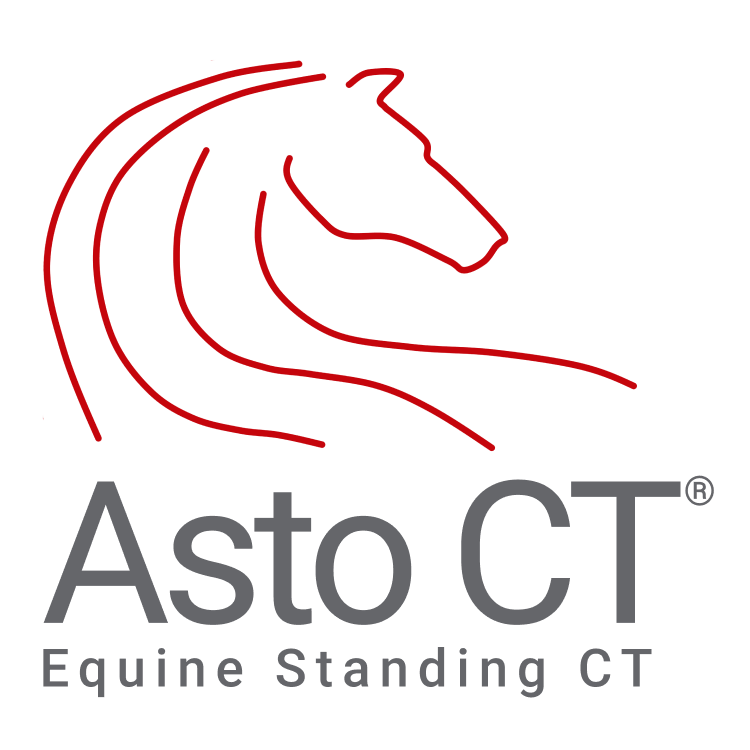Comprehensive Case Reviews with the Equina by Asto CT
Welcome to our recent case review, where we explore some intriguing and complex cases captured with the Equina by Asto CT. This edition features sinus masses to chronic lameness and bone cysts, these cases illustrate the diagnostic journey and treatment strategies for a range of complex pathologies.
Sinus Mass in a 10-Year-Old Tennessee Walking Gelding
Patient History:
Age/Breed: 10-year-old Tennessee Walking Gelding
Chief Complaint: Facial swelling first noted in mid-June
Additional History: Previous 3rd eyelid removal on the right side approximately three years ago
Clinical Presentation:
Veterinarian: Dr. Nicolas Ernst conducted a thorough evaluation.
Swelling: Initially noticed just rostral to the medial canthus of the right eye
Progression: Swelling has since grown across the midline
Nasal Discharge: Intermittent, primarily from the right nostril
Initial Veterinary Assessment:
Radiographs: Indicated a suspicious sinus mass
CT Examination Findings at University of Minnesota:
Firm Swelling: Centered rostral to the medial canthus of the right eye, extending across the midline in the same plane
Outcome
Horse was Euthanized due to poor prognosis.
Chronic Lameness and Behavioral Issues in a Gelding
History: The horse, a gelding, has suffered from right hind (RH) lameness for over three years. During work, it exhibits poor disposition and has developed cribbing habits. Previous veterinarians have been consulted, with the last recommending euthanasia due to a diagnosis of chronic suspensory disease.
Clinical Examination:
Veterinarian: Dr. Kevin Keegan conducted a thorough evaluation.
Right Front (RF) Lameness: Pain elicited from hoof testers across the heels.
Right Hind (RH): Positively reacts to the Churchill test, indicating acute sensitivity to palpation in the high suspensory area in the tarsus (horse attempts to kick).
Diagnostic Imaging:
Quadrilateral Standing CT Scan: Conducted to further investigate the condition. Findings include:
Chronic lytic arthritis observed between the central and 4th tarsal bone in the right hind.
Additional lesions noted on the right front navicular bone and pastern joint.
Outcome: TBD
Successful Treatment of Right Forelimb Lameness in an 8-Year-Old Oldenburg Dressage Gelding
Patient History: An 8-year-old Oldenburg gelding primarily used for Dressage presented with a right forelimb lameness issue. Here's what they uncovered:
Clinical Evaluation:
Veterinarian: Dr. Kevin Keegan conducted a thorough evaluation.
Initial Symptoms: The trainer noticed a "misstep" on the right forelimb, leading to an uneven extended gait, particularly when lunging to the left. The gelding also has chronic left hind (LH) spavin, treated with periodic intra-articular (IA) injections.
Objective Examination:
Equinosis Lameness Locator Exam: Objective and subjective evaluations were conducted, both on asphalt and sand. Surprisingly, no clear forelimb or hind limb lameness was visible to the naked eye. However, with Equinosis a mild right forelimb lameness was detected during trotting on asphalt and lunging to the left on sand. (see below findings)
Further Investigation:
Right Forelimb: Pain upon strong passive flexion of the right distal forelimb. A right forelimb fetlock joint block did not alleviate the lameness, but a coffin joint block significantly improved it.
Persistent Issue: Interestingly, the lameness in the left hind pushoff, attributed to previous diagnosis of a chronic LH spavin, remained unaffected.
Imaging Insights: Standing CT Scan
Sclerosis near the coffin bone's distal navicular lesion
Additional lysis of the navicular bone's distal border
Bone fragment identified in the distal impar ligament
Sclerosis in the adjacent coffin bone
Another bone fragment in the distal impar ligament
Cystic lesions in the navicular bone
Kissing lesion in the navicular bone
Sclerosis in the coffin bone
Treatment Plan:
Intervention: Coffin joint injection with corticosteroids and hyaluronic acid was administered to address the identified right forelimb issues.
Rest and Recovery: The gelding was given two weeks of rest post-injection to allow for proper healing.
Outcome:
Positive Progress: Six weeks post-treatment, the right forelimb lameness resolved, indicating a successful response to the intervention.
Aneurysmal Bone Cyst in a 9-Month-Old Percheron Gelding
Patient History:
Age/Breed: 9-month-old Percheron gelding
Chief Complaint: Respiratory noise persisting for 3 months
Clinical Examination:
Veterinarian: Dr. Sabrina Brounts conducted a thorough evaluation.
General Physical Exam: Normal with no obvious facial asymmetry.
Respiratory Tract Examination:
No airflow from the left nostril
Mild mucoid discharge from the right nostril
No signs of respiratory distress
Endoscopy Findings:
Left Nasal Passage: Collapsed, endoscope could only advance approximately 5 cm from the nose.
Right Nasal Passage: Normal, endoscope passed to the larynx without issues.
Arytenoids: Normal abduction, no abnormalities observed.
Trachea: Normal with a mild amount of mucoid discharge.
Further Investigation:
CT Scan: Conducted to determine the extent and origin of the mass in the head.
Outcome:
Euthanasia: Due to the extensive mass and poor prognosis.
Autopsy Findings:
Final Diagnosis: Multilocular aneurysmal bone cyst
Thank you for joining us in this exploration of complex pathologies. The use of advanced diagnostic tools like the Equina Standing CT Scan and the Equinosis Lameness Locator Exam has been pivotal in these cases, providing precise and comprehensive insights that guide effective treatment plans. Each case reviewed here demonstrates the critical role of cutting-edge technology in equine veterinary medicine.








